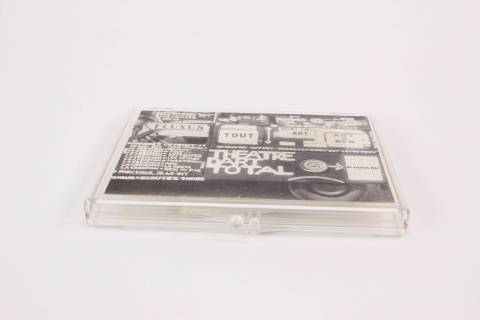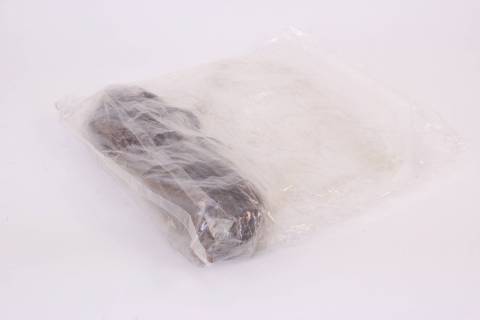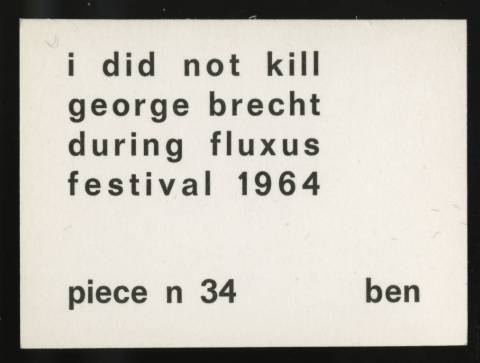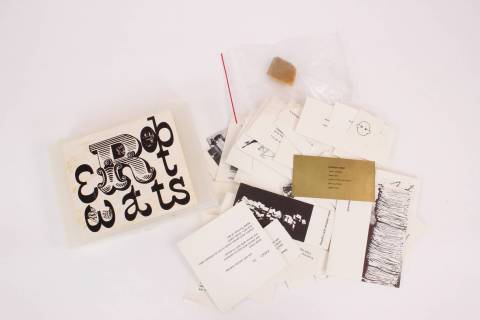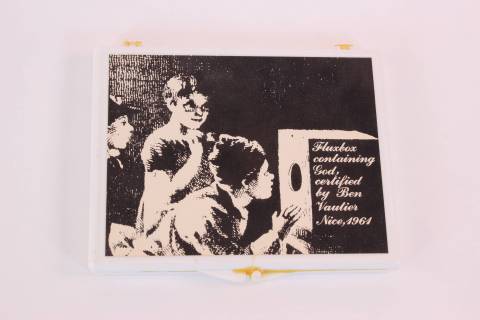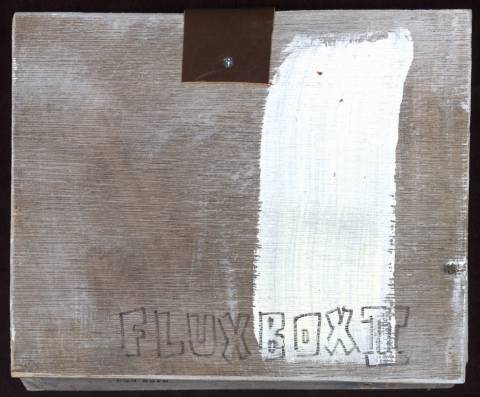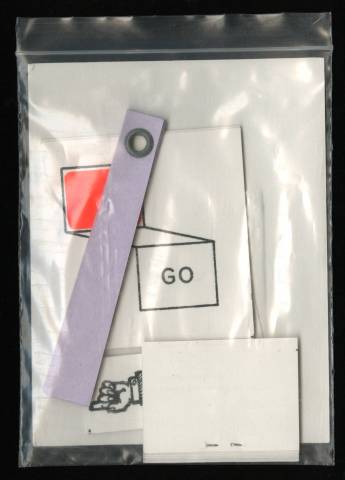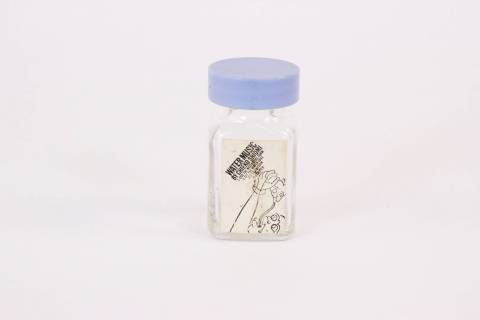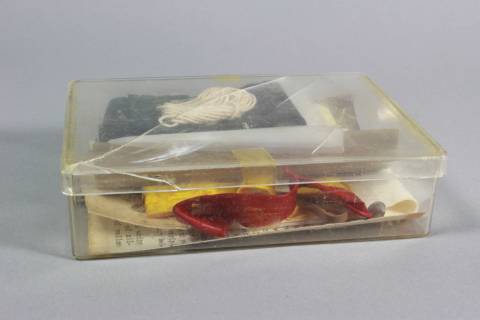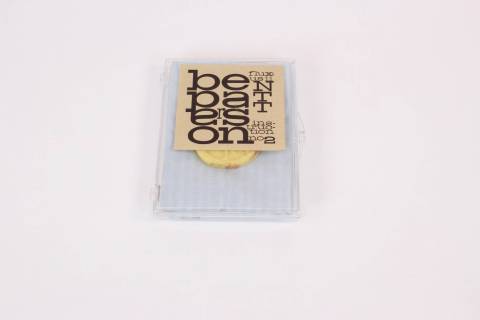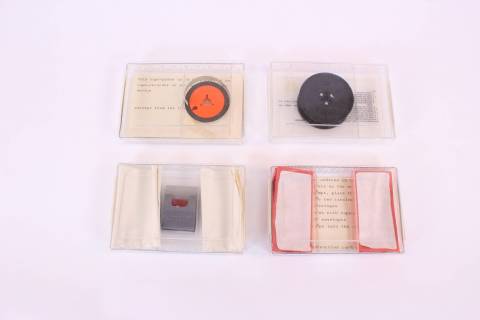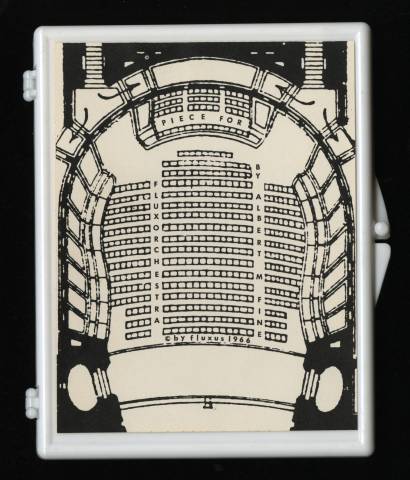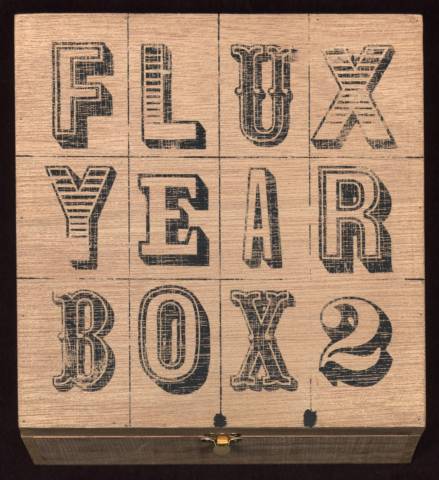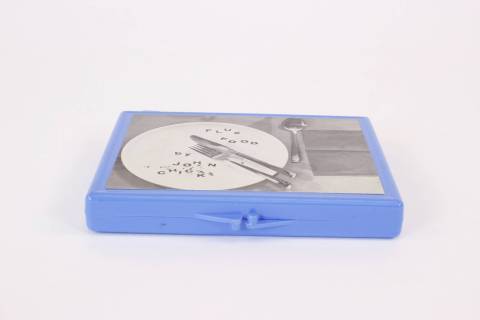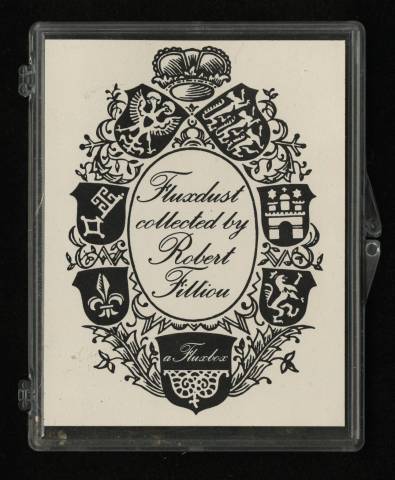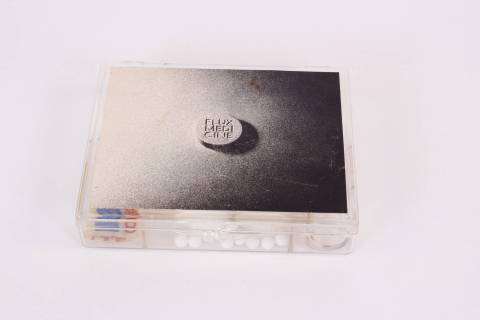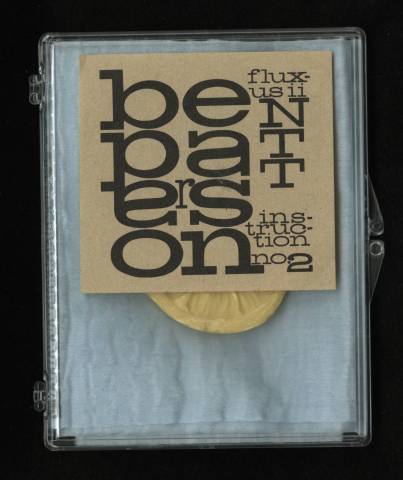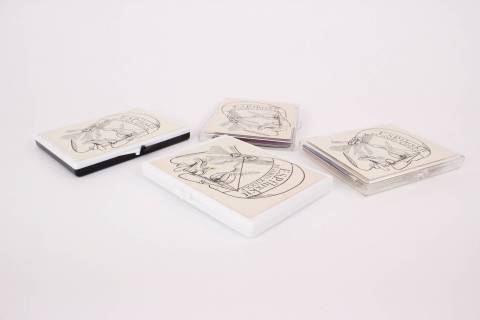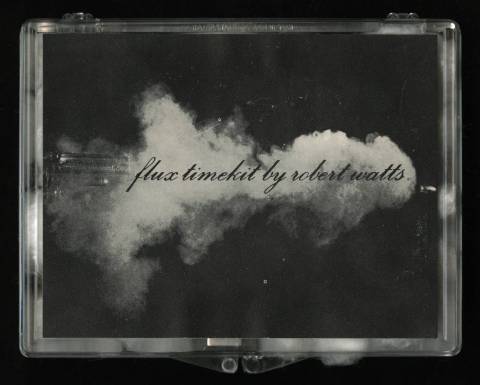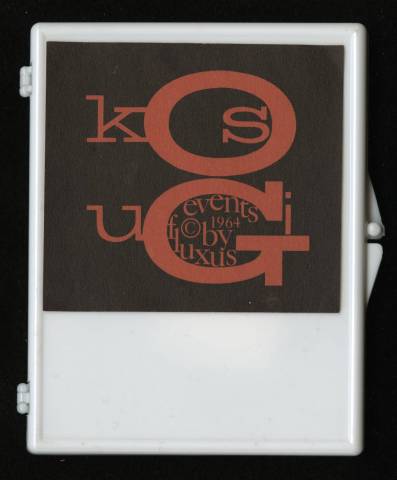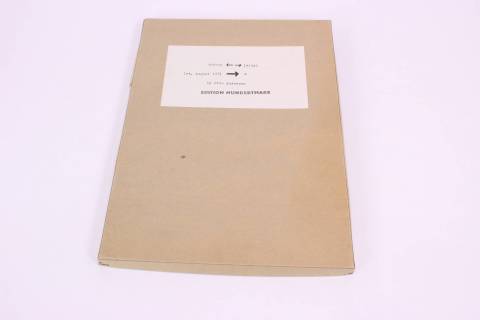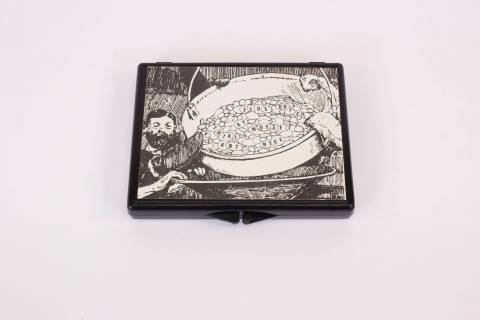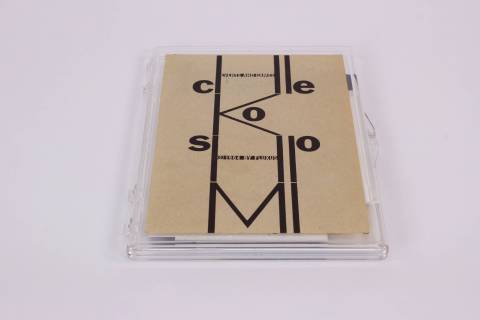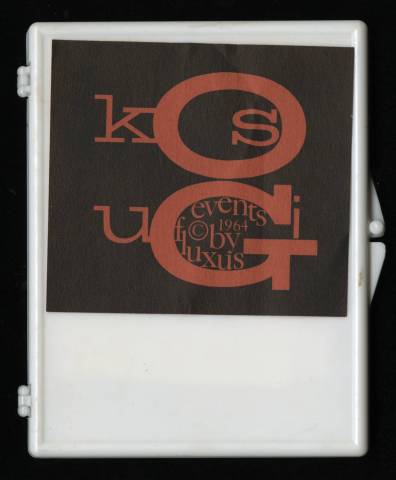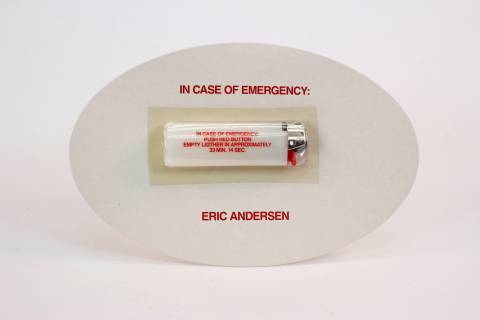Event
DICK HIGGINS proclaimed that Fluxus “did concerts of everyday living.” “Coffee cups,” he remarked “can be more beautiful than fancy sculptures …. The sloshing of my foot in my wet boot sounds more beautiful than fancy organ music.” Hannah Higgins deftly observed two crucial formats among Fluxus artists: the event and the fluxkit multiple. The first is an experiment of poetic, musical, theatrical, and cinematic variation in which everyday activities are framed as performance. Events are simple, direct actions meant to dissolve the distinction between art and everyday life. George Brecht’s Keyhole Event for example: “through either side one event.” In Mieko Shiomi’s fluxfilm titled Disappearing Music for Face, a person’s lips slowly close over a period of eleven minutes. The fluxkit multiple, on the other hand, refers to cases and boxes of various sizes that typically contain small objects, cards, and various text-based works. And because event scores were frequently housed in fluxkits, making them ephemeral and portable, the two formats are integral to one another. The viewer may choose to read these works privately or perform them in social environments.

